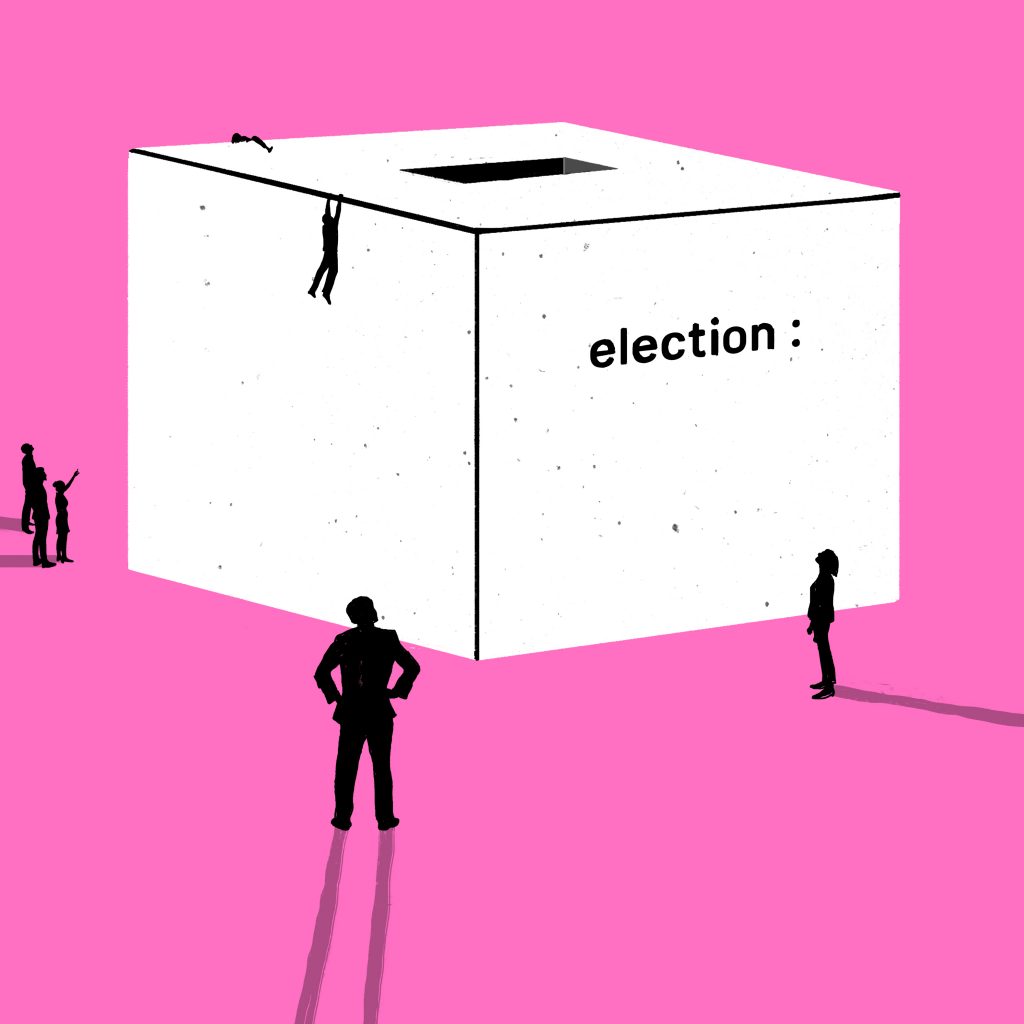
A society of solidarity and care emerging in response to state incompetence and repression enters the stage of military dictatorship at the outset of 2021. After five months of sustained peaceful protests, the number of people taking part in weekly marches is now waning as a result of poor weather, exhaustion, emigration, and pandemic spread; increasing are the networks of horizontal organization and solidarity initiatives from below. From August 2020 to January 2021, the Belarusian state and society have undergone several rapid metamorphoses: on the level of the state, a shift from state-capitalism with soft-authoritarian constitutional rule to a military dictatorship; on the level of civil society, a mass transformation of individuals into citizens and political subjects, active in a horizontal self-governance without leaders; on the level of gender relations, a crack in the hegemony of patriarchy; on the level of the protest movement, a morphing of an uprising into a revolution. If the August election presented an occasion for this process, prepared by the global context (such as the COVID pandemic and economic crisis) and local forces (such as the erosion of the welfare state and generational change), it was an event following that election that spurned this sustained protest movement. The riot police and other forces of the repressive state apparatus unleashed a wave of terror unprecedented in post-Soviet Belarus. What followed was a sustained act of defiance and resistance. A protest against fraudulent elections turned into a revolutionary resistance because in the terror actions that followed, the state authorities became identical with its repressive apparatus. It became clear that the police forces, riot police in particular, have been trained, sustained, privileged, and subsidized in the society with the sole purpose of doing exactly what they did—exercise brutality on the citizens—while fully believing themselves justified to do so, seeing themselves as the true citizens and rulers of the country. As it turned out in retrospect, protesters’ demand for the end of police violence and to hold those responsible for the crimes accountable amounted to a demand to overturn the entire system, because the system based on police violence was built in the course of the past 26 years since the democratic election of Aleksandr Lukashenko in 1994, who has retained the office of presidency since then. In other words, the Belarusian protest expressed a refusal to live in a country in which such terror is a possibility at all, which was tantamount to a revolutionary demand to remake a society as a whole.
At the time of this writing, over thirty thousand people have been detained (most on charges of violating the law on mass gatherings stipulated in Article 23.34), countless people have either left or were forced to leave the country, over 150 people are considered political prisoners, and several are dead since election day on August 9, 2020. The demands of the protesters have not changed: end police repression; release all political prisoners; hold new, fair elections. In the past five months, the protest movement has adopted neither a cohesive political program nor a geopolitical orientation. The world, and the post-Soviet sphere in particular, is following with a keen eye and a series of questions suspended in the air: Is governance without legitimacy, based solely on a repressive apparatus, possible? If so, how? Is peaceful protest insufficient for revolutionary transformation? When the times comes, will the forms of protest, characterized by solidarity, horizontality, and leaderlessness, subordinate or be subordinated by the content of oppositional politicians with the hegemonic neoliberal agenda waiting at bay? The Belarusian revolution has provided an alternative to the color revolutions in the region in the mode of its protest; will it provide an alternative in the mode of its politics? In what follows, I provide a timeline of the events, not so much from the point of view of heroes, a series of heroic actions, or sacrifices by the Belarusian civil society—of which there are many—but from the point of view of the dynamism of the protest with respect to the repression of the authorities that both suppresses and stimulates it. The meaning of these events, no doubt, is determined retroactively from the standpoint of January 2021—i.e., the events that appeared decisive from the standpoint of September have changed their meaning by January—and the current standpoint is characterized by the stalemate between the oppressive apparatus and peaceful protest. While the record of these events also serves an archival purpose, the standpoint of dynamism of the mass movement from which this story is told also serves as a reminder that any stalemate or disappearance of resistance is only apparent, so long as the causes of the resistance persist.

